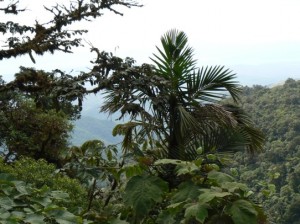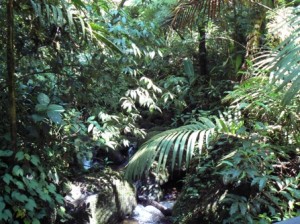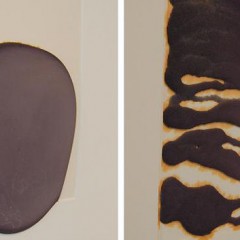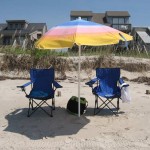Post by Barry Rosof
My brother Barry and his wife Louise have fled Edmonton for the winter (good move) and are lolling in warmer climes–well not exactly lolling. Louise has traveling feet, and Barry is a serious hiker who is happy to accompany her on adventures. Here’s Barry’s report on the challenges of touring Costa Rica: — Libby
I like to drive. Having a challenge is not necessarily bad. Driving in Costa Rica presents many challenges.
The roads have exceedingly sharp curves. The curves can follow one another without letup, for kilometers. That is the start.
Roads are narrow and without shoulders. Most bridges are single lane. Exuberant vegetation growing out of the ditches, fallen trees, vehicles parked on the road, people, cows, and crumbling roadway further limit available width. All roads, paved and gravel, even the Pan American Highway, have potholes.
It is fun taking a curve, gently pressing on the accelerator as one rounds the bend. But here one never knows if a truck is coming, taking up more than its share of road. The vegetation and pot holes further limits ones room to maneuver. And, one is almost always turning. Mas despacio, slower, is called for. I let the Ticos, as the locals are called, pass me. Still, the driving, aside from the fog, is fun. The only down side is that I am unable to look as much as I would like at the great scenery.
There is an additional challenge, navigation. There are no route numbers. Signs are occasional, in an inconsistent format and when driving towards a town the distance given can increase from sign to sign. In many cases there is no sign or if one is present the directions given can be ambiguous. More than once, passing through a town we found ourselves at a sign less T intersection. Do we go right or left? Horror of horrors, on occasion our only recourse was to ask. Fortunamiente Louise habla español.
Then there was the trip up to Monteverde.
Monteverde is famous for its cloud forest and infamous for the road into town. A cloud forest is a unique biome. As the name implies it is always cloudy. In this case not only cloudy but rainy, about 3 meters (10 feet) of rain a year. It must rain all the time. Everyone we ran into before and after our visit said that when they were at Monteverde it rained.
We left Volcan Arenal in the rain and headed towards Monteverde.
It is a four hour drive from Arenal to Monteverde. It is not that it is far, on a clear day you can see Arenal from our hotel in Monteverde, it is just that the infamous Costa Rican roads provide more than their share of challenges.
The first part of our drive was rather routine, rain, fog, wind, a few fallen trees on the road, an occasional pothole, a couple of do we bear right or left as we pass through a town. No big deal. It was the last 30+ km (18+ miles) that provided the real fun. The road is so bad, even by Costa Rican standards, that some rental companies will not allow you to take their cars to Monteverde. It is a dirt-gravel-rock road whose surface is etched by the rain. Potholes abound. The roadbed combined with the usual curves meant we made it up the last part of mountain at less than 25 kph (15 mph).
As we climbed we encountered something unusual, no rain. We had wonderful views of the lush countryside, ever changing as we rounded the bends.
Entering town the directions provided by our tour agency, which had been very valuable in the past, called for the road to change to cement block. We were to then turn left at the bank, go another block to the T intersection and turn left again. Too bad the road was now paved, the bank had moved and the road was now one way the wrong way. With a half hour of map and people consultation we made it to our hotel. A great adventure and we were still talking to each other to boot.
Having arrived mid afternoon with nothing else on our schedule we booked a twilight forest tour. We had no idea what we would see other than trees. We know better than to believe brochures that claim that you might see an animal of one sort or other for example. “Might” is a great qualifier. “Hope to see” is a great incentive.
We were picked up at our hotel by a van and after the expected low speed bumpy ride arrived at an office at the edge of a forest. About eight of us were assigned a guide, and given flashlights. Off we went.
We had walked only a few feet when the guide pointed out a two-toed sloth sleeping in a tree. This provided the guide a good opportunity to tell us all about sloths, what they did when awake (after it became dark), their closest relatives, etc. It was fascinating. OK, the sloth comes down to the ground about once a week to defecate. Many million of years ago sloths were ground dwellers. For reasons that are not known, the only activity that they now carry out on the ground is defecation. Now, isn’t that fascinating. PS, they are related to the three toed sloth (surprise) and armadillos.
We went on to see katydids (two types, they are insects), a poisonous snake hanging in a tree, leaf cutter ants at work, a relative of the raccoon, a tarantula and several birds of one type or another (several of which were sleeping). It was great. (How often do you see sleeping birds?) Our expectations were exceeded. Oh yes, towards the end we saw another sloth, this one moving about. It was a two sloth night.
Part of what made the evening was the guide. He was enthusiastic as well as very knowledgeable. We were to find this same characteristic in all the guides we subsequently used.
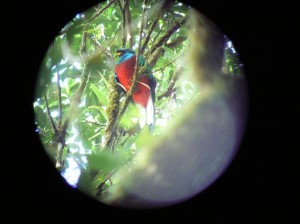
The next morning we drove ourselves to the forest reserve at the top of the mountain for another forest tour. Irrespective of the rain and fog, this is the attraction that brings ‘em up the mountain. Here, according to the guide book and the only specific mentioned, the treat of treats is to catch a glimpse of the Splendid Quetzal, a rare and magnificent bird whose feathers were used in the headdress of Mayan nobility.
The reserve is in private hands and its principal activity is research. In order to protect the forest they admit only 100 tourists a day.
We had advance reservations for a guided tour that left at 7:30 in the morning. When we arrived it was not raining. I think of it as back time for being rained out at Volcanes Poas and Arenal.
Having been out in the forest the night before we wondered what else there was to see. Plenty it turned out. Costa Rica, though small, has more species of birds and snakes than in all of North America. It has many, perhaps more, mammal species, many of which have no North American relatives. (Maybe I should say no close North American relatives. We ran into a monkey crossing the road sign, for example, while driving down the Pan American highway. I’ve seen people crossing the road signs in North America. I believe the two are related, though not closely.) The cloud forest also has unique vegetation, both in types of plants and in how they grow.
Our guide took seven of us out for nearly three hours of birding, animal watching and an introduction to the vegetation of the cloud forest. Look there, he would say, a flock of birds made up of individuals from several species. The reason they do that is… He pointed out another sleeping two towed sloth, a toucan, a giant hummingbird, a large poisonous snake and a monkey among other treats. He also told us that in the cloud forest the moss grows all around the tree (it only grows on one side of the tree elsewhere) and that there are many species of plants which grow in the ground elsewhere but which here are epiphytes, that is grow in trees. (When is an epiphyte not an epiphyte? When it is not in a cloud forest.) Finally, as if on cue, we spotted a Splendid Quetzal towards the end of our tour. It was terrific morning.
My guess is that because there is so much biological diversity one will always see something. Still, I cannot help but feel we were unusually lucky.
I went back to the reserve in the afternoon to take a hike. During two plus hours I spotted many birds and only one mammal. Couldn’t identify a single one. Guess I will not make it as a guide.
The visit to Monteverde was our great Costa Rican experience and it ranks with other great places we have visited elsewhere.
Accompanying are two pictures of the lush vegetation and a picture taken through the guide’s telescope of a Splendid Quetzal. None of them do justice to the subject or the experience.


